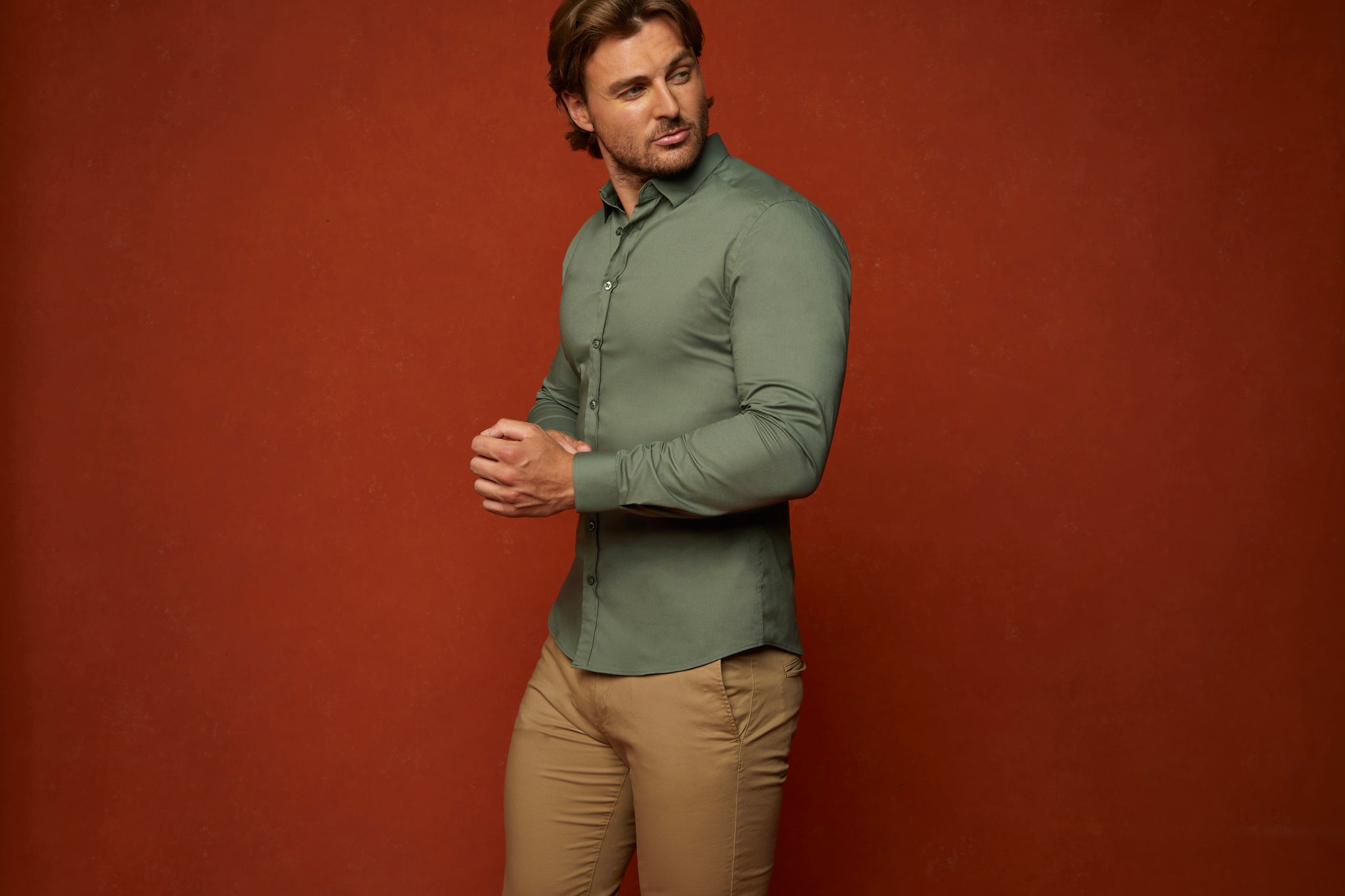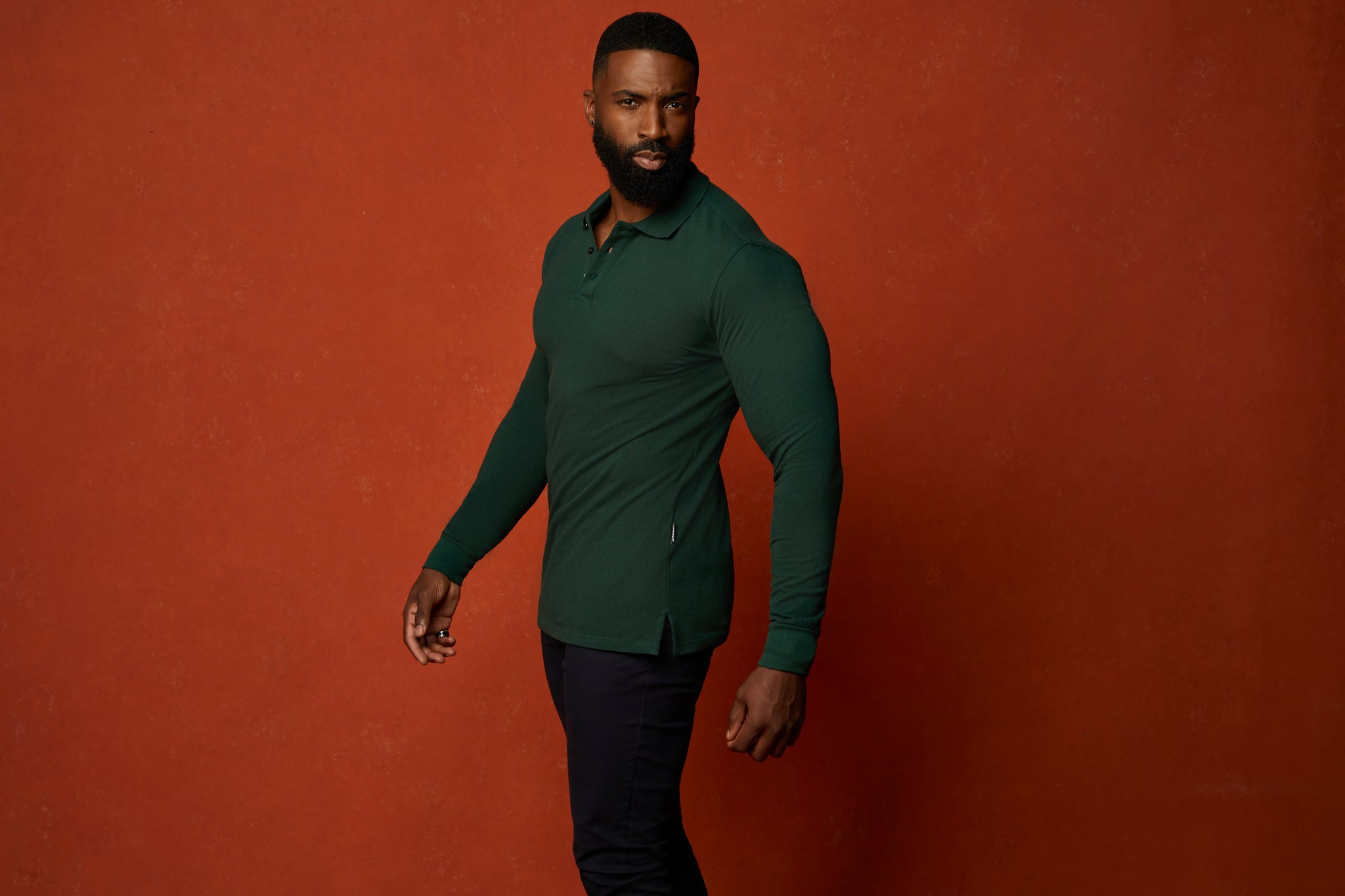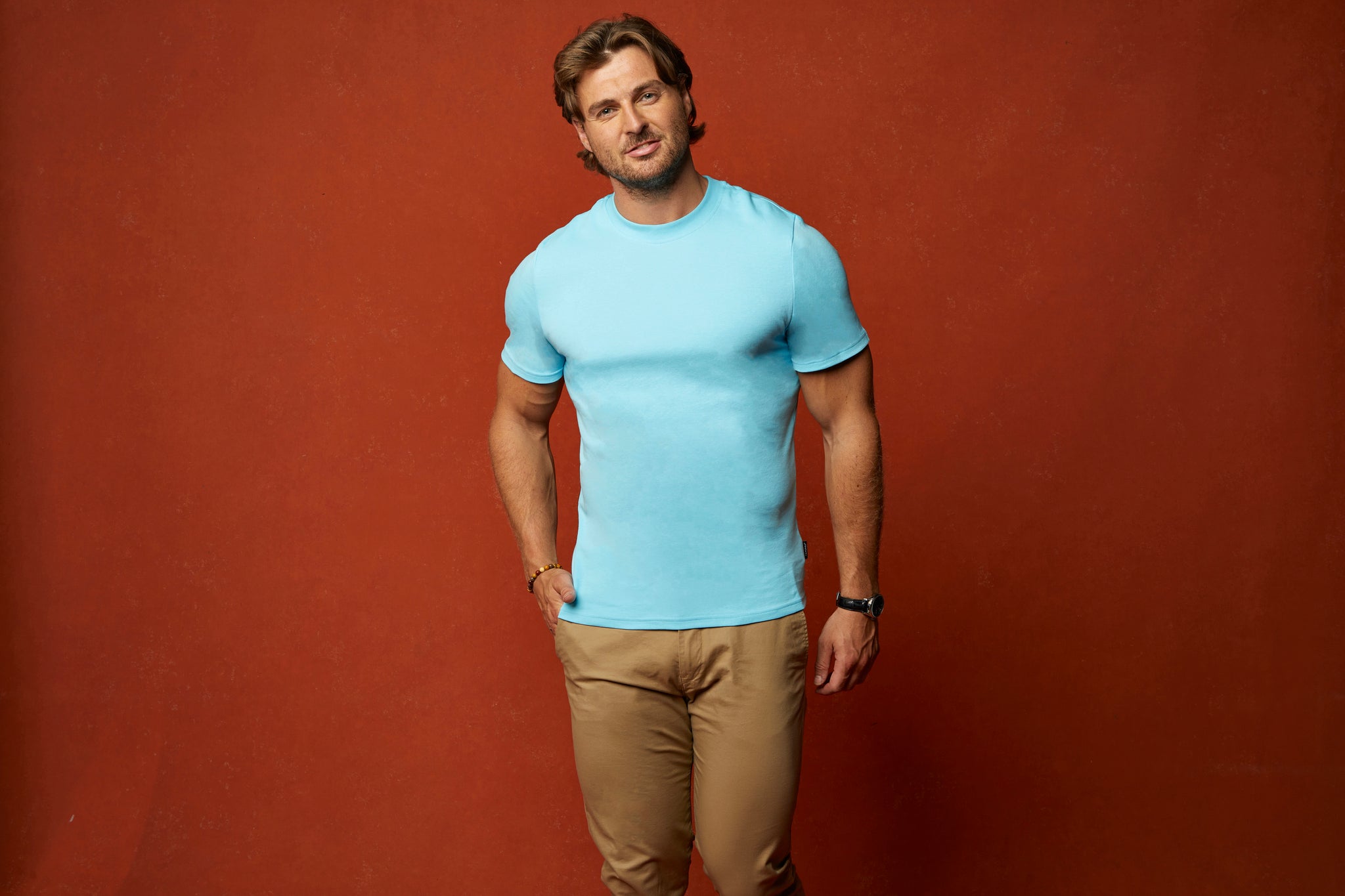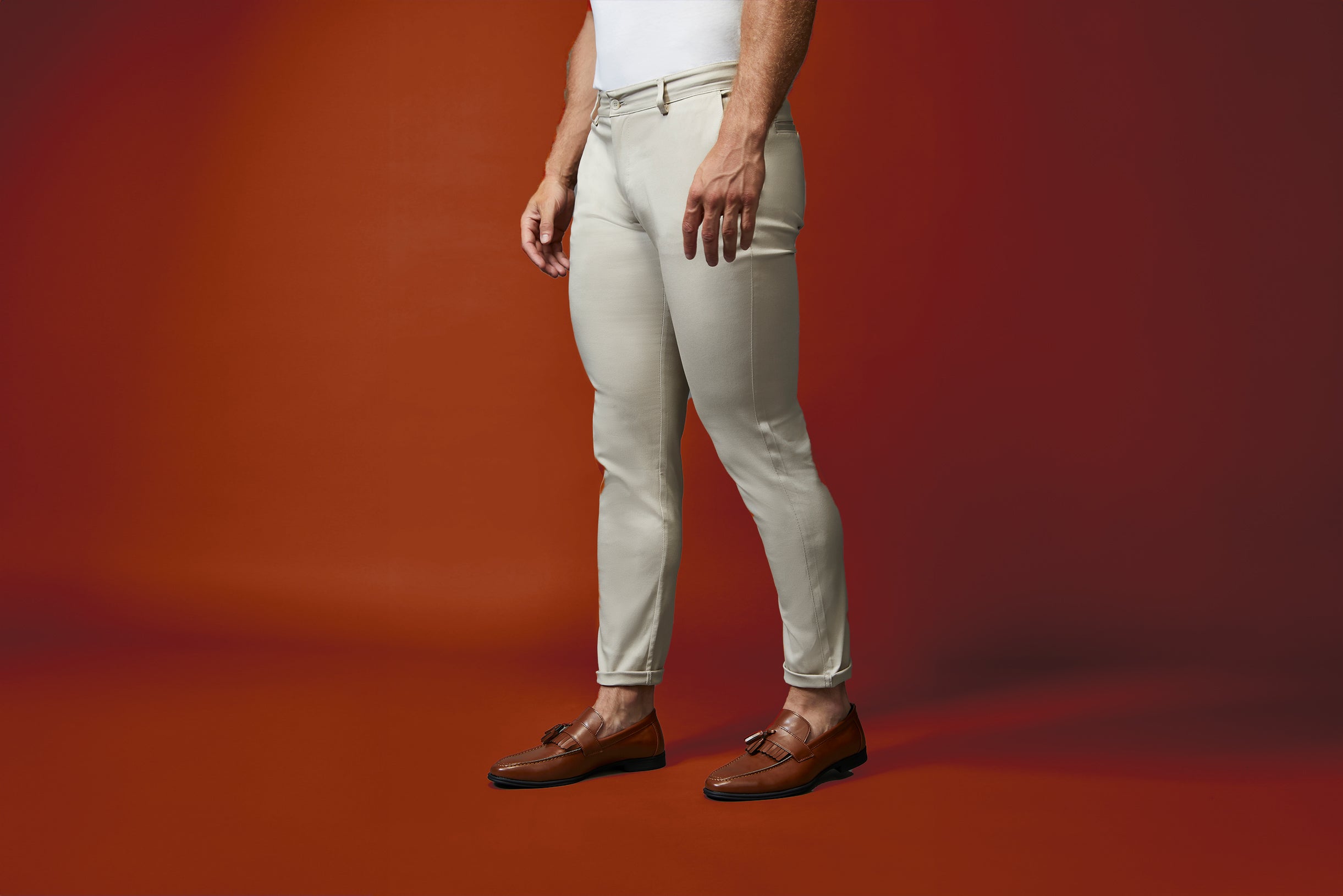Summer is a great time to take stock of the short-sleeved shirts you have. The polo shirt is the happy medium between a shirt and a T-shirt, and it looks great with jeans, skirts, and suits.
Let’s learn more about what a polo shirt is, the main characteristics of them and our very own slim fit polo shirts right here at Tapered.
What Classifies as a Polo Shirt?
Polo shirts are often called golf or tennis shirts. It usually features a placket with three or two buttons and has a collar. Some polos include a pocket, but it’s not a necessity.
What Does a Polo Shirt Look Like?
Generally, they’re made of knitted cloth, and manufacturers use synthetic fibres, silk, merino wool, pique cotton, and interlock cotton. They’re often found in solid colours like grey, black or navy blue. But you can get stripes and other simple patterns.
Typically, polo shirts are form-fitting. Short-sleeved versions are the most popular, but you can find long-sleeved options available.
Looking for a polo that fits perfectly to your body? Check out our collection of fitted polos right here.
What Are Polo Shirts? A Brief History
Polo shirts are highly popular, and they have a long, rich history. Most of their influence comes from famous names. They first appeared in the UK in the 19th century, when the British military started wearing them.
The UK adopted the polo shirt from the Indian natives in the area, and it became synonymous with the upper class and royalty.
One issue was that the collar flapped in the wind while golf and tennis players enjoyed their sport. John Brooks from Brooks Brothers found that players used buttons or pins while on a trip to England.
Once he returned to the United States, he introduced a similar button-down collar into his dress shirts, which is still found in modern styles. He first provided this option in 1896.
The pique polo you know today is from the tennis court and not the polo field. It’s a short-sleeved shirt with a collar and buttons and was designed in France in 1929 by Rene Lacoste.

Though it was designed specifically for him and included an embroidered crocodile, many people were interested. It soon became the top article of clothing, and the polo club fraternity welcomed it immediately.
However, it took 33 years before the polo pique launched on the market. Ralph Lauren was the first supplier, and the shirt included a small embroidered polo player on the chest.
What Is the Difference Between a T-Shirt and a Polo Shirt?
A traditional shirt is called a T-shirt, and it’s unisex. They’re often collarless with short sleeves and use light fabric. Generally, these are for casual wear only, so they shouldn’t be worn to professional or formal events.
You can find various patterns and shapes, though the round neck is the most popular. Most people wore them as undershirts originally, but now they are the sole tops for many women and men.
They can have slogans, cartoons, and pictures on them, and some are solid or patterned.
|
Polo Shirt |
T-Shirt |
|
Short-sleeved and made of cotton |
Short-sleeved and features a “T” shape when spread flat |
|
Collared |
Not collared |
|
Two to three buttons under its collar |
No buttons |
|
Casual and more sophisticated events |
Casual only |
|
Uses knitted cloth |
Uses woven cloth |
|
Can find solid colours and basic shapes |
Can find images and slogans printed on them, can be solid or large patterned |
|
Collared neckline |
Various necklines (U- and V-neck are the most popular) |
Polo Shirt vs. Button-Down - What's The Difference?
A polo shirt, typically crafted from a knit fabric like pique cotton or a blend, is identified by its two or three-button placket and soft collar. It is pulled over the head and is recognised for its athletic, casual vibe.
In contrast, a button-down shirt is constructed from woven materials such as Oxford cloth and features a full-length front opening secured with buttons.
It's collar, designed to be fastened down with buttons, gives it a more formal edge, making it appropriate for business or smart casual settings.
While the polo shirt exudes a casual ease, the button-down shirt's structured formality is what sets it apart. with that being said you can still dress up your polo with some smart chinos.
Does a Polo Shirt Have to Have a Collar?
Yes, polo shirts always have a collar, which distinguishes them from T-shirts. Likewise, it might look strange to have the buttons in the middle of the shirt without the collar to set them off.
Why Is It Called a Polo Shirt?
Polo shirts originated as the popular choice for polo matches, which is how it got its name. However, it quickly moved to become the best option for tennis and golf. Now, they come in various styles, fabrics, and colours.
Pros and cons of a polo shirt
Polo shirts have a number of advantages. They are versatile in that they can be used for both formal and casual occasions. They are an elegant go between of both sporty and functional.
The only con with a polo shirt is how you wear it. If you pair this with a pair of chinos you can risk the preppy look so make sure you wear it well.
An alternative would be to wear it untucked with jeans rather than tucked into a pair of bright coloured chinos.
What Fabrics Are Used for Polo Shirts?
Typically, polo shirts are made of 100 percent cotton, though some brands use 100 percent polyester or blends, such as 4 percent spandex and 94 percent poly/cotton.
Polo Shirt Material
Pique is the most popular material, and it features a knitted weave that provides a patterned and raised texture. Polos made with that fabric are highly durable, have more dimension, and don’t show sweat.
The most formal polos are made of 100 percent cotton. They often look more expensive than other blends. That’s why they are the classic choice for business attire.
Pique is highly versatile and is found in formal cotton shirts and sportswear. Most people wear polos for golf, white tie events, and to be part of the fashion craze.
You can also find polos made of jersey material, so they’re softer and suitable for exercise and physical activities.
What Does a Polo Shirt Look Like?
When looking at the shirt laying flat, you see slightly rounded shoulders that taper off to short sleeves. They often have a band around them, though that might not be noticeable.
In the middle, you see a collar, which is usually the same colour as the fabric. There are two to three buttons at the heart of the collar.
The bottom of the shirt looks like a normal square or rectangle. They’re designed to be form-fitting and can be tucked in or left outside the pants. However, they should not hang or sag from the body. Polos can be tailored if this is the case.
Some polos include a pocket, but many of them don’t.
What is a Polo Shirt Without Buttons Called?
Polo shirts without buttons are still considered a polo shirt. They dont have a dedicated name it simply just describes its construction.
Although these are more rare and difficult to come across because you cant quite beat the classic buttoned style.
Why Do Polo Shirts Shrink?
Some fabrics, such as pique, shrink slightly when washed, so most people recommend buying one size larger than you need. If you buy one that’s too big, you can shrink it on purpose.
Use the highest and hottest setting on your washer and dryer to shrink the polo. Cotton often shrinks most during the first washing. Therefore, you might want to wash it before wearing it for the best results.
If your goal is to prevent shrinkage, make sure to use a cold rinse cycle. You may still wash in hot water, but the colder water at the end reshapes the polo so that it doesn’t get bigger.
Consider air-drying your polo shirts instead of putting them in the dryer. Those who are afraid of wrinkles can choose the delicate dry cycle for the best results.
Most people prefer spandex, nylon, polyester, and acrylic materials because they resist most stains and do not shrink. However, they can produce static and could permanently wrinkle, so use a low heat setting.
Difference Between Male and Female Polos
Generally, the logo on a man’s shirt is on the chest and aligned with the last button. However, ladies’ shirts have logos aligned with the middle or top button. It’s a small thing, but you can see it if you pay attention.
Longer Backs on Polo Shirts
Some polo shirt manufacturers make the back longer than the front. It used to be a tradition and helped the person wearing it keep the shirt tucked in while bending over.
You often find that polo shirts hit right past the waistband or go a bit lower to the fly area.
The option you choose depends on whether you plan to tuck them in or not.
Can You Wear a Shirt Under the Polo?
Traditionally, the polo shirt is supposed to be the only layer, though some people wear it as a base. Undershirts often look bulky and can be seen under the collar and past the sleeves.
However, you may need to wear an undershirt because of skin irritation. It’s best to measure the shirt’s length, use a V-neck style, and ensure that the sleeves are short enough that they aren’t noticed.
If you are wearing an athletic fit polo shirt you will not need an undershirt as these are typically cut closer to the body.
Conclusion
It’s important to know what a polo shirt is. You’ve learned about its characteristics, why it has a collar, what it looks like, and the differences between that and a regular shirt.
When you want to look sharp or need a shirt for business-casual days at work, the polo shirt is the optimal choice. It seems more sophisticated than a T-shirt and goes with jeans, suits, and anything in-between.
Check out our Tapered Fit Polos which are form fitting for athletic shaped bodies.
Our revolutionary cut provides a 10" drop from chest to waist.
Fully fitted in chest and shoulders whilst tapering sharply down, giving a tailored look. No more bagginess in the waist.
Closely Fitted At Biceps
Moulds to your arm and cut to the optimal length to emphasises the bicep peak.
Stretch Cotton
Super soft, breathable and allows complete freedom of movement.
Perfect for formal occasions.
With our non obtrusive logo stitched subtly on the waist makes our TAPERED Fit Shirt ideal for formal occasions.
Tapered Fit polo shirts are the true solution to your polo shirt fitting problem.

























